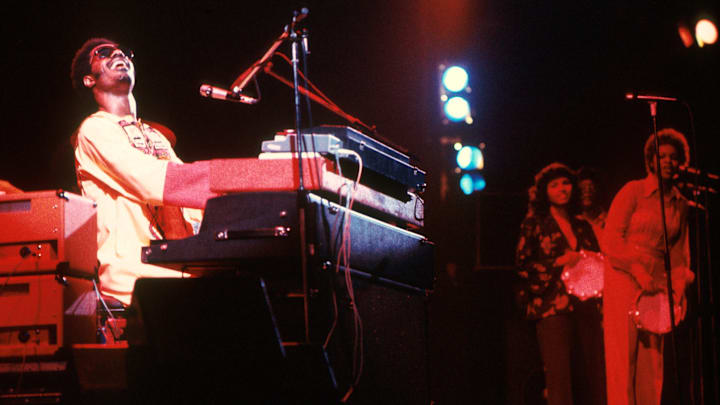12. Sneaking Sally Through the Alley by Robert Palmer
Big Star’s Alex Chilton had been the lead singer of the Box Tops in the 1960s. Robert Palmer had been singing with Vinegar Joe. In 1974, Palmer went solo. His debut album, Sneaking Sally Through the Alley, got mixed reviews. Some critics felt that Palmer was too pretty for the blues he was singing. He looked too pretty – his voice wasn’t rough enough – his production was too clean.
But if listened to with unbiased ears, you realized that this was a different style of blues. It really wasn’t blues at all, though it shared some common ground. Palmer was effervescent – the way one song blended into another so smoothly you barely even realized things were different. With help from Little Feat founder Lowell George, who wrote a couple of songs and played guitar on a bunch more, Palmer cranked out one of the most assured albums of the years.
11. Phases and Stages by Willie Nelson
Few albums epitomized what outlaw country truly was more than Willie Nelson’s 17th studio album, Phases and Stages. It had nothing to do with being an “outlaw.” It had entirely to do with telling the Nashville-based gatekeepers of country music to go screw themselves. Nelson was going through a breakup and as an artist, he felt compelled to examine it through song.
This is a concept album that looks at the dissolution of a marriage from the woman’s point of view on the first side, and then through the man’s on side two. The songs flow into each other. There are no obvious singles – an abhorrent concept to record labels concerned with radio play and hit records.
Even so, rockers like “Pretend I Never Happened” and “Bloody Mary Morning” went on to become important songs in Willie’s repertoire. Phases and Stages is easy to overlook because it is positioned between two of country music’s most important albums – 1973’s Shotgun Willie and 1975’s Red Headed Stranger. But it’s not like Willie forgot how to write sensational songs in between those two giants.
10. Graham Central Station by Graham Central Station
Larry Graham was the bass player in the revolutionary Sly & the Family Stone. He had some differences of opinion with Sly Stone and consequently formed his own band in 1974. Like Sly…, it was a multi-racial, multi-gendered band that specialized in the funkiest of funk. Graham is often credited with inventing the slap bass technique that helped give additional pop to funk.
After a brief gospel vocal, “We’ve Been Waiting,” which introduces the new band, Graham and company (including Sly guitar player Freddie Stone) launch into the groove of “It Ain’t No Fun to Me,” and we are off and running. “Hair” features that slap bass to full effect. “Can You Handle It” lets the horns drive the car for a while, while the towering “Ghetto” closes out the album, bookending the gospel of “We’ve Been Waiting” on an epic scale.
